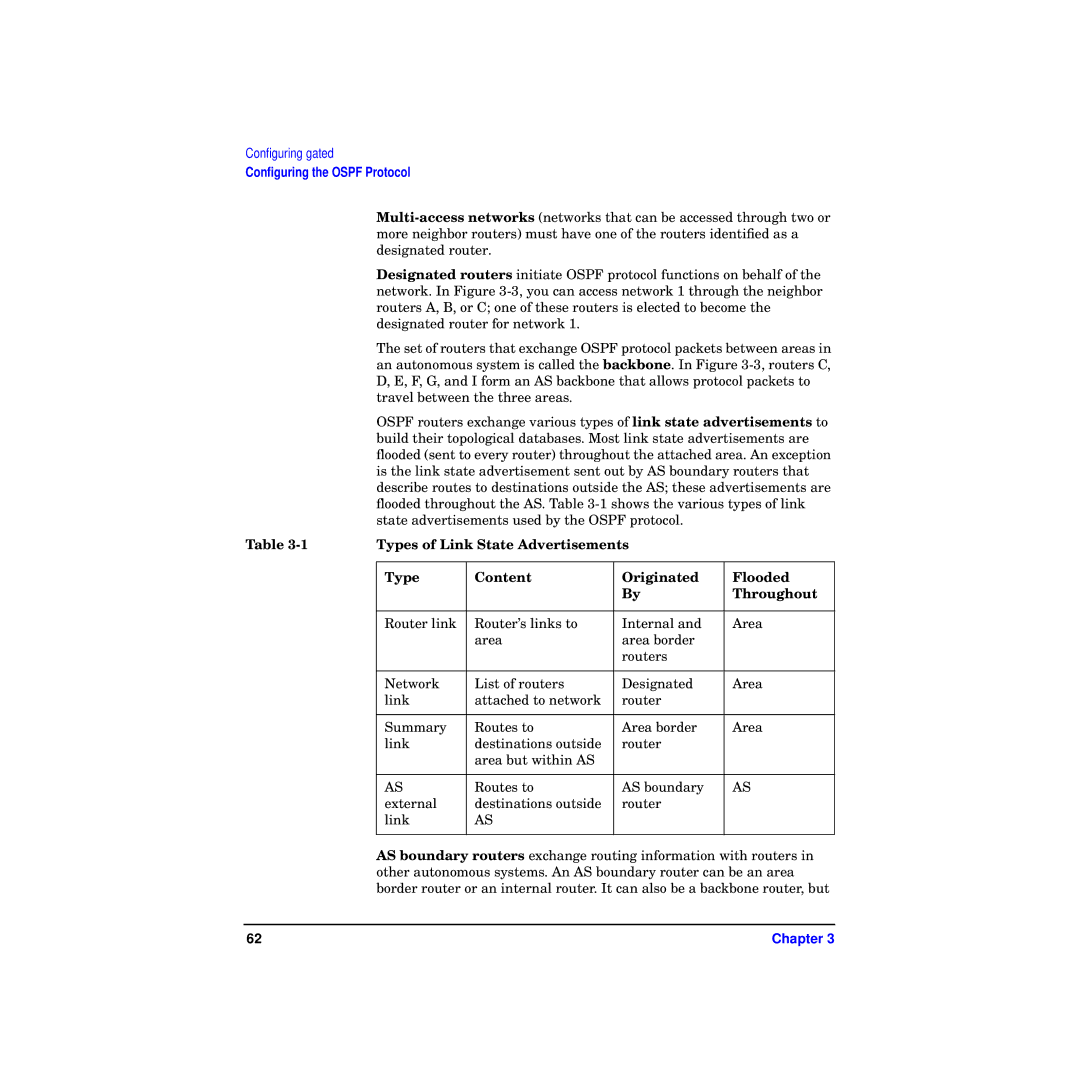
Configuring gated
Configuring the OSPF Protocol
Designated routers initiate OSPF protocol functions on behalf of the network. In Figure
The set of routers that exchange OSPF protocol packets between areas in an autonomous system is called the backbone. In Figure
OSPF routers exchange various types of link state advertisements to build their topological databases. Most link state advertisements are flooded (sent to every router) throughout the attached area. An exception is the link state advertisement sent out by AS boundary routers that describe routes to destinations outside the AS; these advertisements are flooded throughout the AS. Table
Table | Types of Link State Advertisements |
| ||
|
|
|
|
|
| Type | Content | Originated | Flooded |
|
|
| By | Throughout |
|
|
|
|
|
| Router link | Router’s links to | Internal and | Area |
|
| area | area border |
|
|
|
| routers |
|
|
|
|
|
|
| Network | List of routers | Designated | Area |
| link | attached to network | router |
|
|
|
|
|
|
| Summary | Routes to | Area border | Area |
| link | destinations outside | router |
|
|
| area but within AS |
|
|
|
|
|
|
|
| AS | Routes to | AS boundary | AS |
| external | destinations outside | router |
|
| link | AS |
|
|
|
|
|
|
|
AS boundary routers exchange routing information with routers in other autonomous systems. An AS boundary router can be an area border router or an internal router. It can also be a backbone router, but
62 | Chapter 3 |
